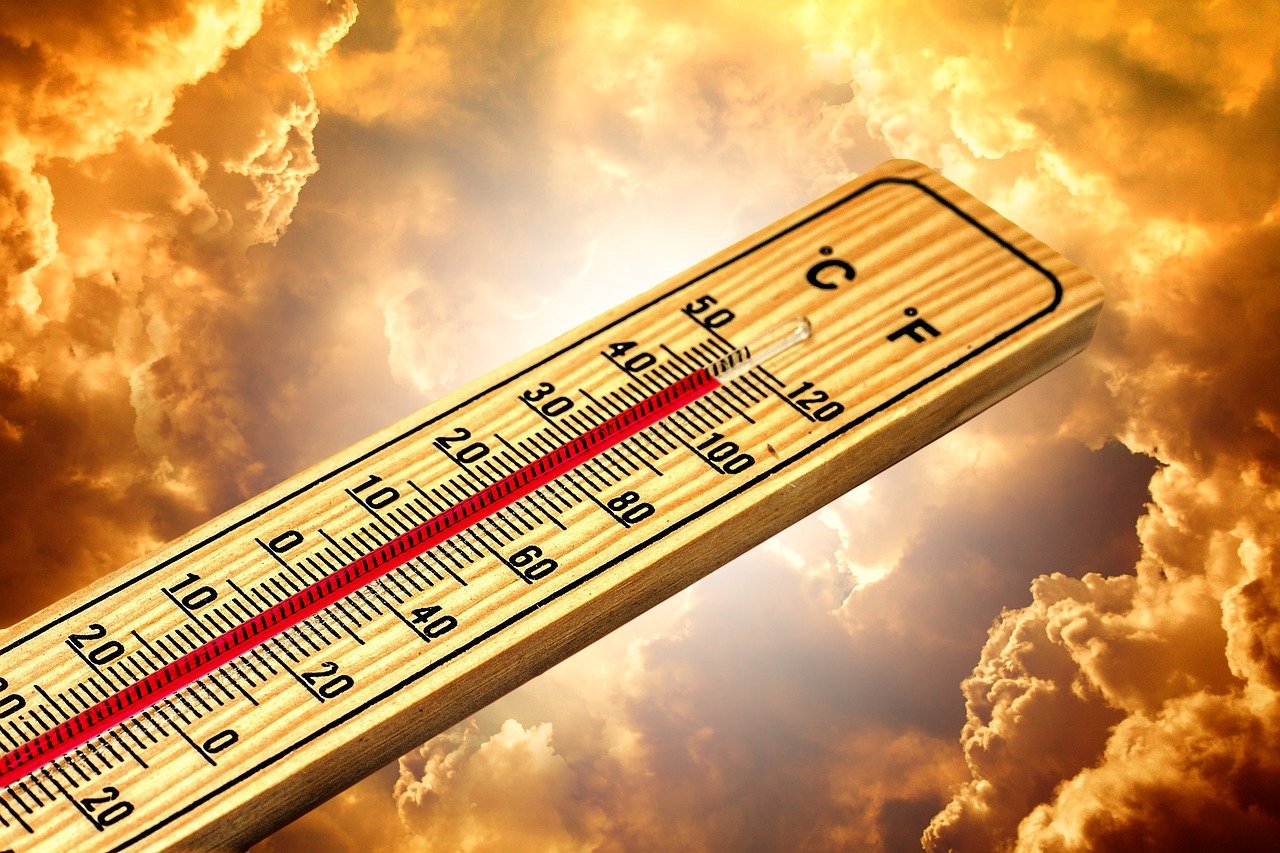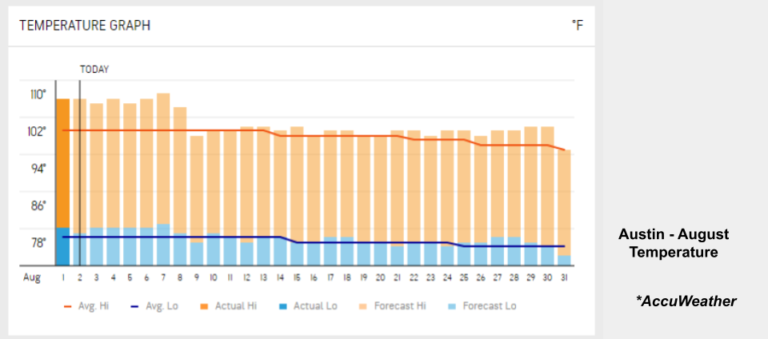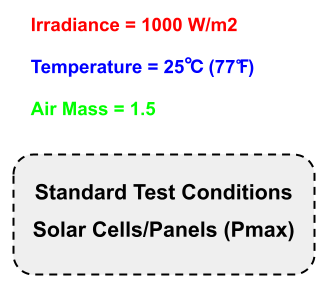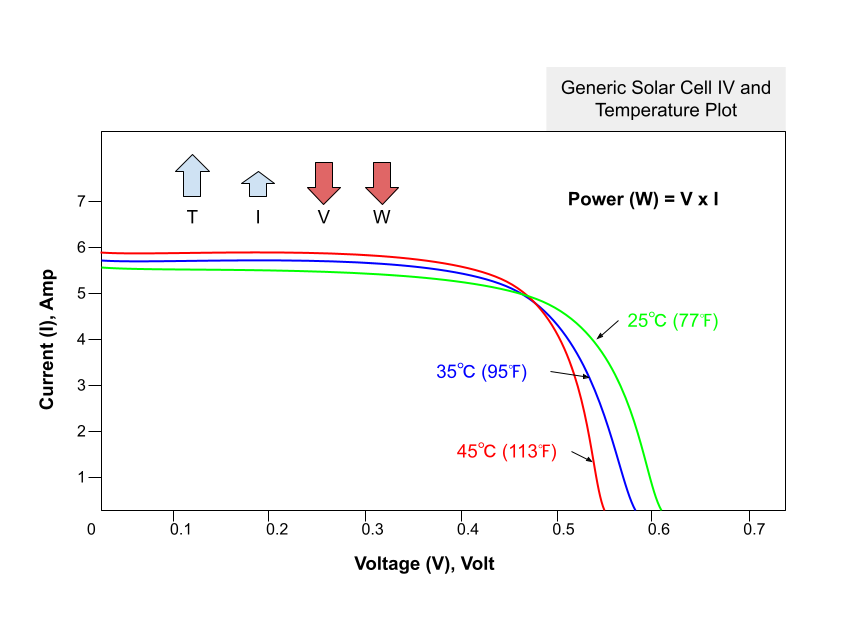Another Summer – another heat fest in Central Texas. Endless triple digit days… One would think that Solar Power Production would be through the roof to meet the electricity demands from all the air conditioners running overtime. However, this is not the case. Natural Gas powered electricity generation actually ramps up to satisfy most of the additional air conditioning requirements. This happens every summer despite all the year/year solar generation capacity being added. Paradoxically, PV (PhotoVoltaic) cells work best when the Photons fall perpendicularly on them at cold temperatures and not so much when the same Photons are delivered at elevated temperatures.

Image by Gerd Altmann from Pixabay

Portable Solar Panels, Pmax and STC
Solar Cells and Panels vendors publish a Max Power (Pmax) value. This Pmax value represents Power Generation under Standard Test Conditions (STC). In addition, vendors publish a value called Temperature Coefficient (Pmax). This number represents the change in Power generation for every C (1.8F), for e.g. a -0.32 Temperature Coefficient represents a Pmax reduction of -0.32% for every 1C increase in temperature from STC base of 25C.
Portable Solar Panels are typically constructed with lighter materials in contrast to rigid Residential and Utility Solar Panels. It is common for a 100W Portable Solar Panel to weigh less than 10 lbs whereas a Residential Solar Panel would typically be in 300-400W range and weigh 35-50 lbs.

Pmax and IV Plots/Temperature
A decrease in Power Generation (Pmax) when temperature increases is primarily due to the Current (I) and Voltage (V) changes in a Solar Cell. When Temperature increases, the capacity to generate current goes up (small increment) whereas Voltage sees a relatively bigger dip. This causes Power (P = V x I) to decrease as temperature rises. Another contributing factor for decline in overall Solar Panel power generation is the quality of internal wiring. Any use of inferior quality material (e.g. aluminum wires instead of copper) can lead to larger Temperature Coefficient (Pmax).
